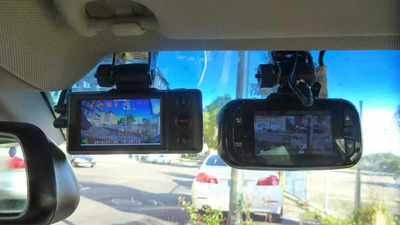A dash cam , or dashboard camera , is a small device mounted on your vehicle’s dashboard that records video footage of the road ahead. Increasingly popular among drivers, dash cams offer valuable insights and evidence in case of accidents, road incidents, or theft. They serve as an additional layer of security, capturing every detail while driving.
With advancements in technology, dash cams now come equipped with features such as night vision, GPS tracking, and collision warnings. However, despite their benefits, they come with their own set of challenges and limitations. Understanding both the advantages and disadvantages of dash cams can help you make an informed decision about whether to install one in your vehicle.

What is a dash camera? A dash cam, or dashboard camera, is a small camera mounted on the dashboard or windshield of a vehicle. It continuously records video footage of the road ahead, and often the interior of the vehicle, while the car is in motion. This device operates autonomously and can capture crucial moments during driving, providing visual evidence in the event of accidents or disputes.
Why do you need a dash cam? Accident documentation In the unfortunate event of a collision, a dash cam provides clear evidence of what transpired. This footage can be invaluable for insurance claims and legal proceedings, helping to establish fault and verify the details of the incident. Protection against fraud Dash cams can protect drivers from fraudulent claims.
For instance, they can provide proof in cases where other drivers stage accidents or make false claims about being injured. Improved driving behaviour Knowing that their driving is being recorded can encourage drivers to adhere to traffic laws and practice safer driving habits, potentially reducing road rage and reckless behaviour. Record of incidents Besides accidents, dash cams can capture other road incidents, such as hit-and-runs, road rage, or even acts of vandalism, providing crucial evidence to authorities.
Peace of mind Having a dash cam installed can offer peace of mind to drivers, knowing that their journey is being recorded and that they have a reliable witness in the event of an incident. Advantages of dash cams Evidence in disputes The primary advantage of a dash cam is its ability to provide clear, objective evidence in case of accidents or disputes, which can be critical for resolving insurance claims and legal matters. Deterrent for unlawful behaviour The presence of a dash cam can deter potential criminal activities such as vandalism or fraudulent insurance claims, as perpetrators are aware they are being recorded.
Enhanced safety Many modern dash cams come with features such as lane-keeping assistance, collision warnings, and parking mode, which can enhance overall driving safety and security. Capture scenic drives For those who enjoy road trips, a dash cam can also be a great tool for capturing beautiful landscapes and memorable moments during travel. Disadvantages of dash cams Privacy concerns Dash cams record continuous footage, which may raise privacy concerns, particularly if the camera captures video of other people or vehicles without their consent.
Cost High-quality dash cams with advanced features can be expensive. Additionally, there may be ongoing costs for storage solutions, such as cloud services or extra SD cards. Distraction If not properly mounted, a dash cam could obstruct the driver's view or become a distraction, potentially affecting driving safety.
Battery life and reliability Some dash cams may have issues with battery life or reliability, especially in extreme temperatures. It's important to choose a high-quality model to ensure consistent performance. Legal implications The use of dash cam footage in legal proceedings can be subject to local laws and regulations.
In some regions, the footage might not be admissible in court or may be restricted in how it can be used. Simple steps to choose and use a dash cam Step 1: Decide if You Need a Dash Cam Why you might need one: Helps with insurance claims. Provides evidence if your car is stolen or vandalized.
Adds extra security while driving. What coverage you need: Decide if you want to record just the front view or both front and rear views. Step 2: Choose the right type of dash camera Basic dash cameras: What they do: Record the road ahead.
Pros : Affordable and easy to set up. Cons : Only records the front view. Dual-sided dash cameras: What they do : Record both the front and rear of the vehicle.
Pros : Offers complete coverage. Cons: Costs more and is a bit harder to install. Hybrid or GPS-enabled dash cameras: What they do : Combine GPS and dash cam functions.
Pros : Saves space and offers multiple features. Cons : Usually more expensive. Step 3: Understand how dash cameras work Recording: Automatic start: Begins recording when you start the car.
Loop recording: Replaces old footage when storage is full. Storage: MicroSD card: Stores the video footage. G-Sensor : Locks footage during sudden movements to prevent it from being overwritten.
Power Supply: Power source : Typically powered through the car’s cigarette lighter or by hardwiring. Step 4: Install the dash cam Choose a location: Front camera : Place it behind the rearview mirror. Rear camera: Mount it on the rear windshield or rearview mirror.
Mount the camera: Follow the instructions to secure the camera in place. Connect the Power: Plug the power cable into the cigarette lighter or hardwire it, following the guide. Step 5: Manage and review footage Check storage capacity Make sure your microSD card has enough space.
Add an external card if needed. Backup important footage Regularly save recorded videos to your PC or Mac. Review footage Use the dash cam’s app or interface to view and manage your videos.
.



















